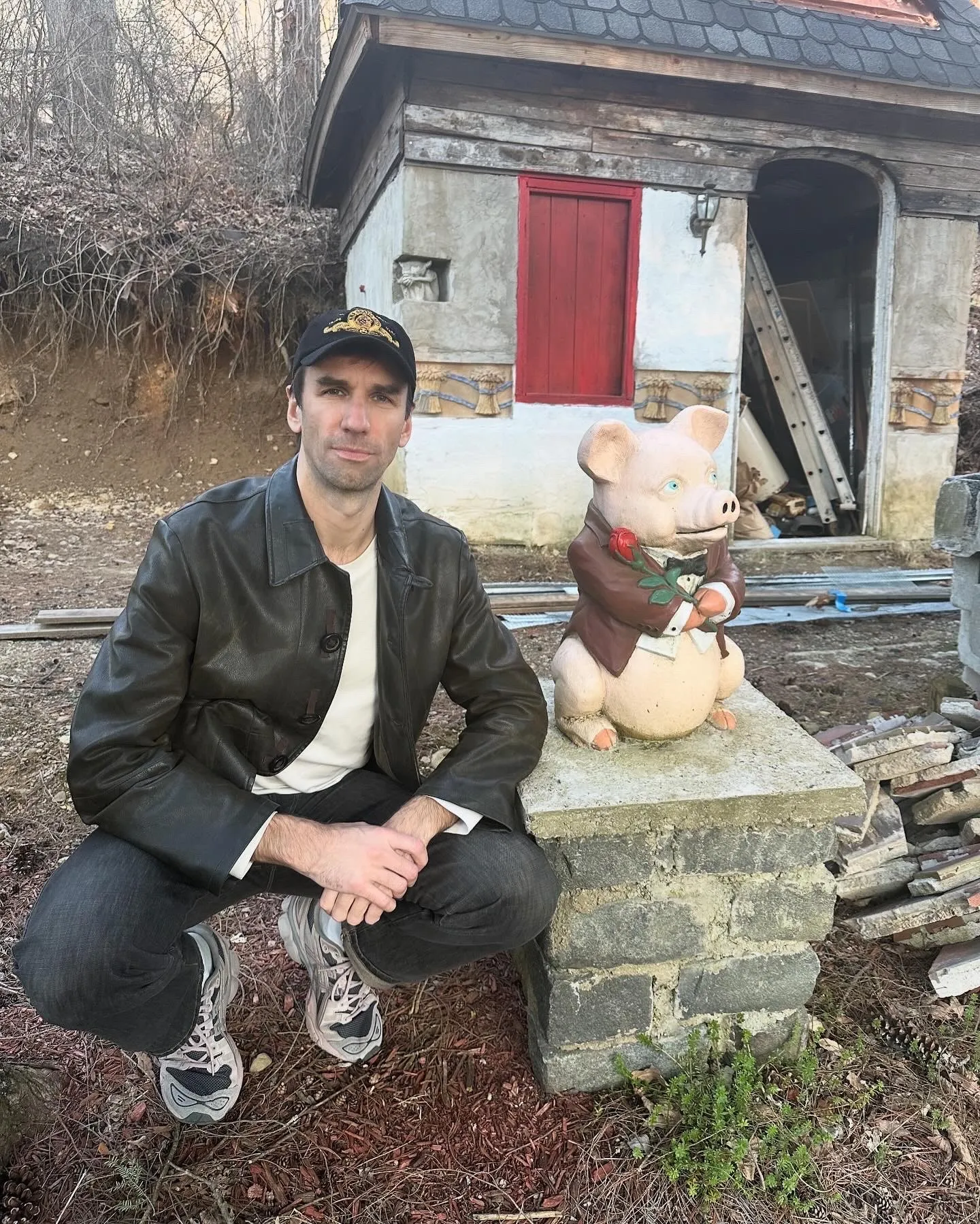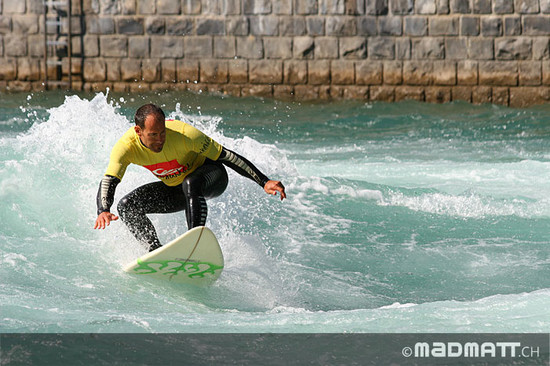Idyllic River Doubs raises pollution concerns

The River Doubs meanders serenely through stunning scenery between Switzerland and France, but below the surface all is not well: the river is reportedly dying.
Last weekend 1,000 nature-lovers protested at Goumois in canton Jura urging action to save the river, whose fish are dying in growing numbers. The authorities and power firms claim to be addressing the issue, but not fast enough, say activists.
“It’s a terrible paradox,” Lucienne Merguin-Rossé, from the local branch of Pro Natura, told swissinfo.ch. “This region is incredibly wild and one of the most beautiful in Switzerland but its water source is dying.”
Over the past two years dead fish have been observed in increasing numbers at various points along the U-shaped river, which starts at the French village of Mouthe in the western Jura mountains before snaking 453 kilometres into Switzerland and then back into France.
“Initially it was just trout that caught saprolegnia mould, but this year it’s been all species of fish. There has been an enormous drop in biodiversity for a few years now,” Merguin-Rossé said.
Patrick Malavaux, a fish gamekeeper from France, said algae, caused by human activity, had spread widely in the Doubs Valley.
“In some places you have a football pitch-sized area in the middle of the river. It disturbs the chemical balance of the river water,” he said.
“Cesspool”
Merguin-Rossé and Malavaux were among those taking part in a demonstration in the village of Goumois on May 14, protesting against state of the Doubs, which they said had become a “real cesspool”.
The demo brought together 300 people from Switzerland and 700 from France, including the photographer and naturalist Yann Arthus-Bertrand, who promised to help as “the Swiss and French states are not doing their job”.
But Erich Staub, head of the fisheries and aquatic fauna department at the Federal Environment Office, defended the authorities.
“Politically it’s been accepted that there is a problem. There is enormous concern within the Doubs Fisheries Commission about this situation,” he told swissinfo.ch.
“But there is no clear causality regarding the fungal disease nor do we know which particular strain it is and therefore it’s difficult to make measurements.”
Staub said the presence of the saprolegnia fungus was not exceptional but the quantities of affected fish “were not normal”.
“When affected fish are observed in such concentrations, there must be other problems giving the fish stress such as eutrophication or hydro-peaking,” he said.
Dam blame
Despite numerous scientific studies over the years, the causes of the problem remain multiple and unclear.
Based on the findings of a 2010 report, canton Jura recently pointed the finger at a number of “dysfunctional” activities such as the frequency and magnitude of peak power sluicing by hydropower plants that causes the river level to rapidly rise by up to one metre. This is permitted under existing Swiss regulations dating back to 1969, which are due to be revised by 2015.
“This decline in the Doubs is caused by the three dams that have seriously disrupted the ecosystem for years,” said Walter Wirth of the Jura Anglers Association. These include the dam and hydropower plant at Châtelot, managed by Groupe E, the Refrain plant, controlled by EDF in France and La Goule plant in canton Jura.
The Jura authorities and the anglers would like to reduce the large variations in the river levels during sluicing.
Groupe E claims that since 1998 it has taken numerous voluntary measures to limit the impact of hydropower activities on the river and recently announced it would reduce its operation during the summer months.
The anglers association is also calling for a proper analysis of the sediment that has gathered for years behind the hydropower dams and which can suddenly be released, to know if it is toxic or not.
“The Doubs river basin is the fief of the watchmaking industry and everyone knows what a polluting industry this can be with metals and solvents,” said Malavaux.
“Emergency”
There are also concerns that micropollutants, such as medicines and hormones from water treatment plants or pesticides used on crops bordering the river, have slowly seeped into the Doubs over the years.
The Doubs Valley is made of limestone which is “like a gruyere cheese, as everything filters straight down”, said Merguin-Rossé.
Staub is confident that Franco-Swiss working groups set up last year to look into water quality and water regulations and an evaluation of fish stock density this summer will make a difference. But environmental groups complain they have not been included and want more urgent action.
“This problem was denounced some 20 years ago but nothing has been done,” said nature photographer Jean-Paul Luthi.
“We really are in an emergency and need to operate on the patient, not just observe that they are dying, or tomorrow they really won’t be with us anymore,” he noted.
The Doubs is a river in eastern France and western Switzerland that snakes over 453 kilometres. Its source is near Mouthe in the western Jura mountains.
The river course resembles an inverted letter U, with the northeastern corner the only point at which the Doubs flows into Switzerland (cantons Neuchâtel and Jura) as far as the mediaeval town of St Ursanne.
The Doubs is a popular tourist destination for kayaking, trekking and fishing.

In compliance with the JTI standards
More: SWI swissinfo.ch certified by the Journalism Trust Initiative














You can find an overview of ongoing debates with our journalists here . Please join us!
If you want to start a conversation about a topic raised in this article or want to report factual errors, email us at english@swissinfo.ch.